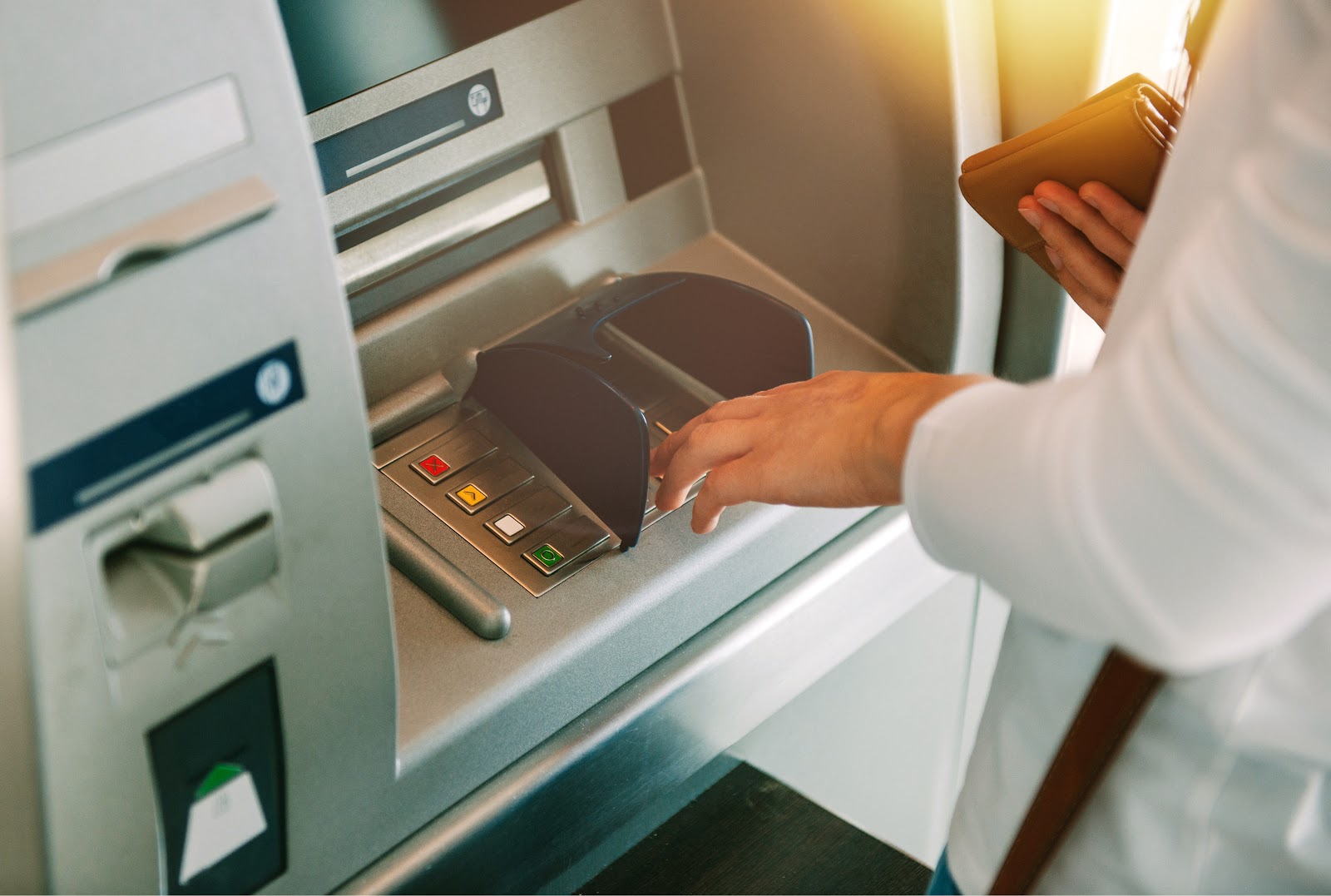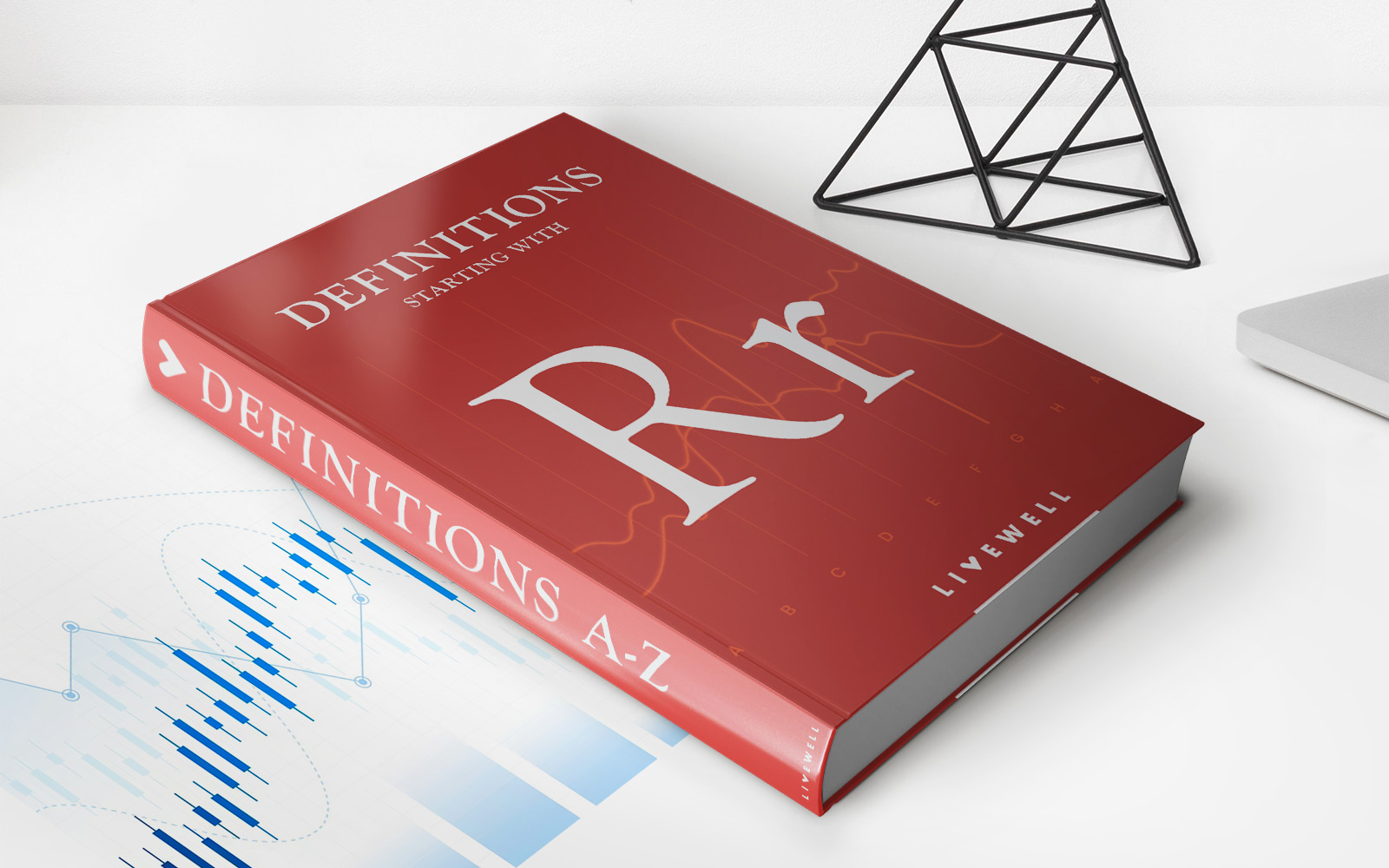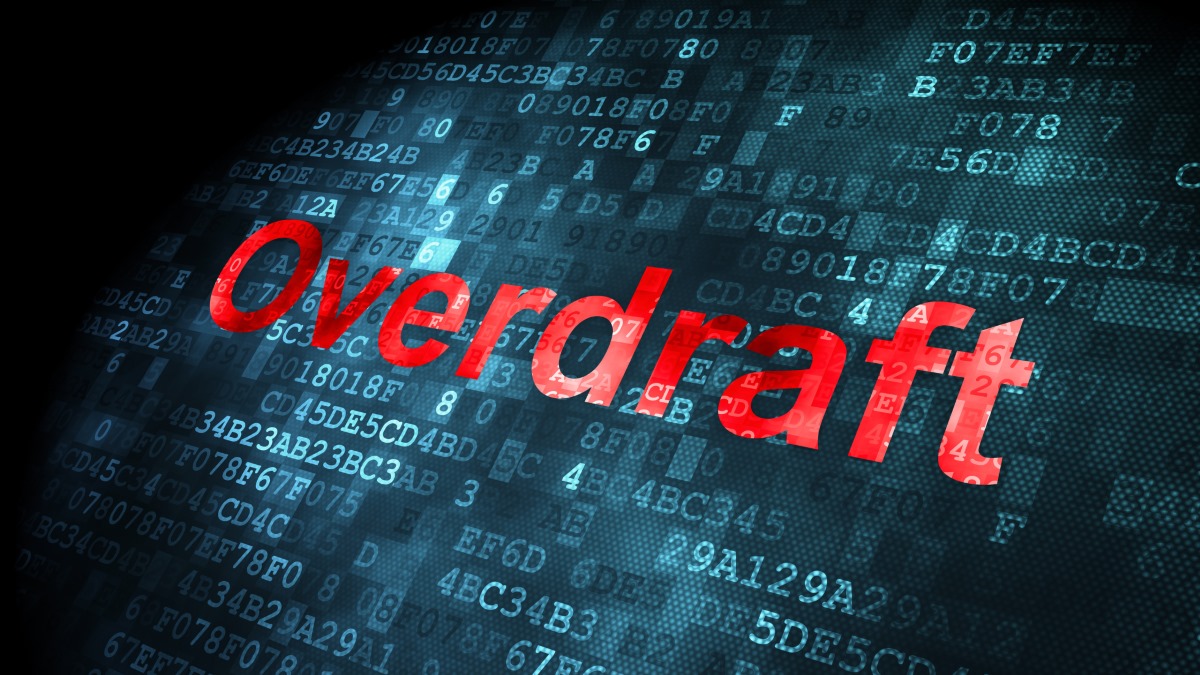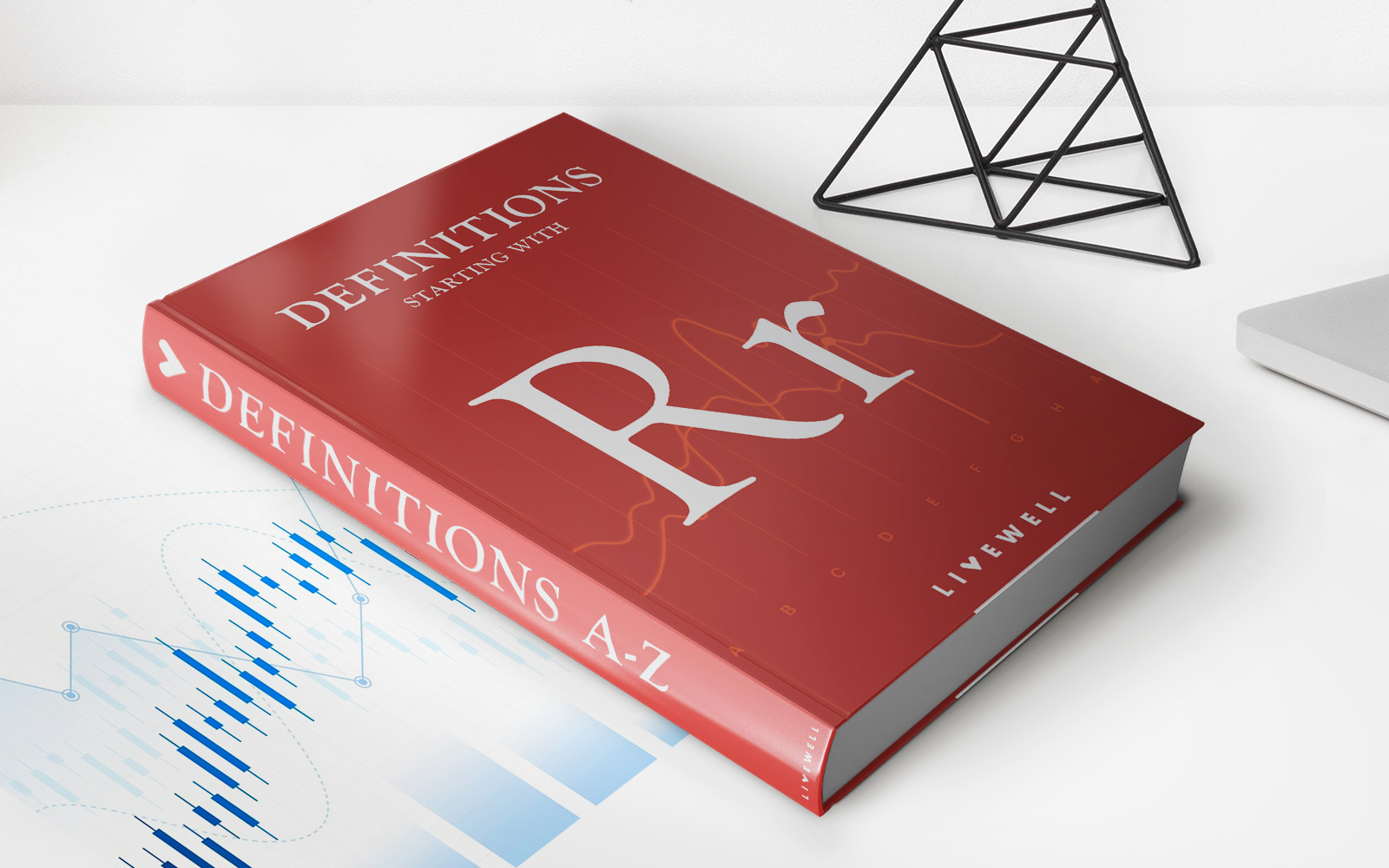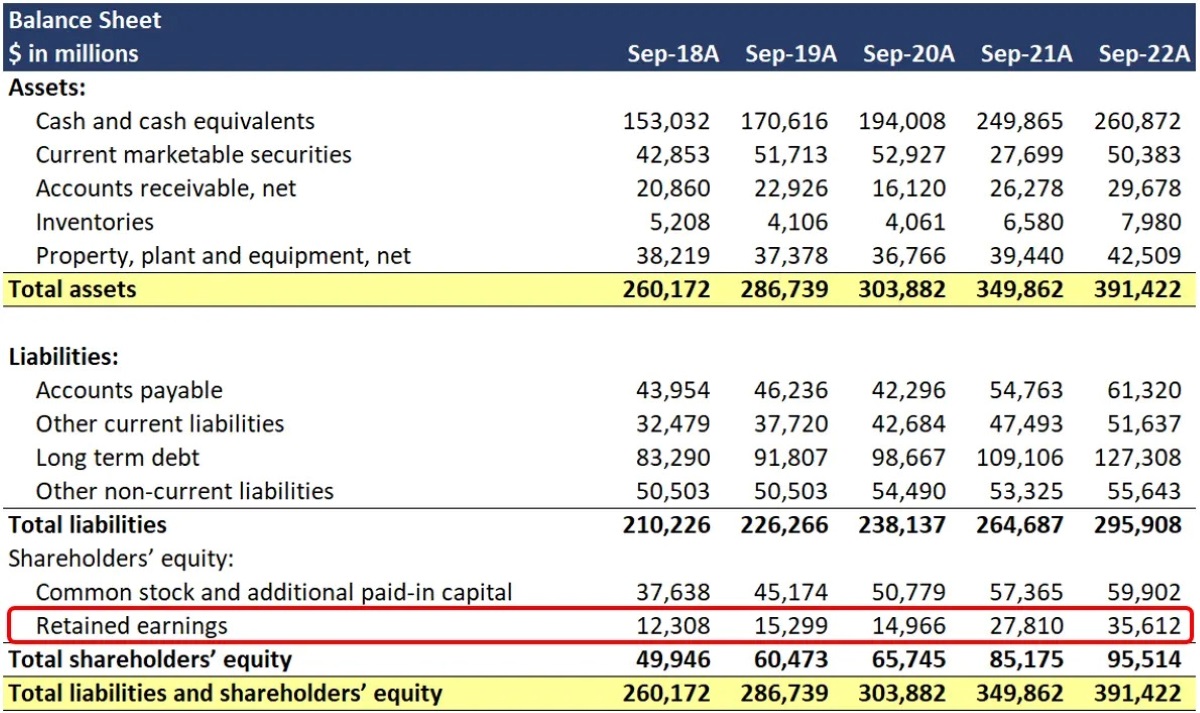

Finance
What Is A Ready Line Of Credit
Published: January 6, 2024
Get the financing you need with a ready line of credit. Discover how this financial solution can help you meet your funding requirements and manage your expenses efficiently.
(Many of the links in this article redirect to a specific reviewed product. Your purchase of these products through affiliate links helps to generate commission for LiveWell, at no extra cost. Learn more)
Table of Contents
- Introduction
- Definition of a Ready Line of Credit
- How Does a Ready Line of Credit Work?
- Benefits of a Ready Line of Credit
- Qualifications and Requirements for Obtaining a Ready Line of Credit
- How to Apply for a Ready Line of Credit
- Managing and Using a Ready Line of Credit
- Comparison between Ready Line of Credit and Other Forms of Credit
- Potential Drawbacks and Risks of a Ready Line of Credit
- Conclusion
Introduction
A ready line of credit is a flexible financing option that individuals and businesses can utilize in order to access funds whenever needed. It is a pre-approved revolving credit line that provides borrowers with the ability to quickly access funds up to a certain limit, without the need for collateral or going through a lengthy application process. This type of credit is commonly offered by financial institutions such as banks and credit unions.
The main advantage of a ready line of credit is its convenience and accessibility. Unlike traditional loans that have a specific purpose or require a formal application, a ready line of credit allows borrowers to access funds instantly for a variety of purposes, such as managing cash flow, covering unexpected expenses, or taking advantage of time-sensitive opportunities.
With a ready line of credit, borrowers only pay interest on the amount they actually use, rather than the entire credit limit. This makes it a cost-effective solution for individuals and businesses that have fluctuating financial needs or require access to funds on a regular basis.
Furthermore, a ready line of credit offers flexibility in terms of repayment. Borrowers can choose to repay the borrowed amount over a predetermined period of time or make interest-only payments. This allows for greater financial control and the ability to adjust repayment terms based on cash flow and financial circumstances.
In the following sections, we will delve deeper into the definition, workings, benefits, qualifications, and potential drawbacks of a ready line of credit. Whether you are an individual looking for a safety net or a business wanting to maintain liquidity, this article will provide valuable insights to help you make informed decisions regarding the use of a ready line of credit.
Definition of a Ready Line of Credit
A ready line of credit, also known as a revolving line of credit or an open-end credit, is a financial arrangement provided by banks or credit unions that allows borrowers to access funds up to a predetermined limit. It is a form of credit that works similarly to a credit card, providing borrowers with the ability to borrow and repay funds as needed, within the credit limit.
Unlike a traditional loan, a ready line of credit offers a continuous source of financing. Once approved, the borrower can access funds at any time without the need for a new loan application or approval process. This provides a level of financial flexibility, as funds can be accessed quickly and conveniently, eliminating the need for time-consuming loan applications and credit checks.
The credit limit, which is determined by the lender based on the borrower’s creditworthiness, income, and other factors, represents the maximum amount that can be borrowed at any given time. This limit can range from a few thousand dollars to several hundred thousand dollars, depending on the borrower’s financial profile and the lender’s policies.
Interest is charged only on the outstanding balance that is borrowed and utilized, not on the entire credit limit. This means that if a borrower has a credit limit of $50,000 but has only used $10,000, they will only be charged interest on the $10,000. The interest is typically calculated based on the prime rate plus a margin determined by the lender.
Repayment terms for a ready line of credit vary depending on the lender and the borrower’s agreement. Some lenders require monthly payments of principal and interest, while others may allow interest-only payments for a certain period of time. This flexibility allows borrowers to tailor their repayment schedule to their financial situation and cash flow. Additionally, borrowers have the option to repay the borrowed funds in full or make partial payments over time.
A ready line of credit is a versatile financial tool that provides borrowers with a safety net and the ability to manage their finances effectively. In the next section, we will explore how a ready line of credit works and the various benefits it offers.
How Does a Ready Line of Credit Work?
A ready line of credit functions as an ongoing source of funds that borrowers can tap into as needed. Here is a step-by-step breakdown of how a ready line of credit works:
- Application: To obtain a ready line of credit, borrowers must apply with a financial institution such as a bank or credit union. The application process typically involves submitting personal and financial information, including income, credit history, and any collateral that may be used to secure the line of credit.
- Approval and Credit Limit: Once the application is submitted, the lender evaluates the borrower’s creditworthiness and financial stability. Based on the borrower’s profile and the lender’s criteria, an approved credit limit is assigned. This limit represents the maximum amount the borrower can access.
- Accessing Funds: After the credit line is approved, borrowers can access funds by using various methods provided by the lender. These methods may include writing checks, utilizing a debit card, making transfers online, or visiting a branch to request cash withdrawals.
- Interest and Payments: Interest is charged only on the amount of funds borrowed and utilized. The interest rate is typically variable and based on the lender’s prime rate plus a margin. Borrowers may have different payment options, such as making monthly payments of principal and interest or choosing to make interest-only payments for a certain period of time.
- Repayment and Borrowing Cycle: As borrowers repay the borrowed funds, the available credit limit is replenished. This means that the borrower can continue to access funds up to the credit limit as long as the account is in good standing and payments are made on time.
- Review and Adjustments: Lenders periodically review the borrower’s creditworthiness and financial situation. Based on this review, they may choose to increase or decrease the credit limit, adjust the interest rate, or take other actions to ensure the credit line aligns with the borrower’s current circumstances.
A key aspect of a ready line of credit is its flexibility. Borrowers have control over when and how much they borrow, making it a suitable option for managing cash flow fluctuations, unexpected expenses, or taking advantage of opportunities that require immediate financing.
Next, we will explore the benefits that come with using a ready line of credit, both for individuals and businesses.
Benefits of a Ready Line of Credit
A ready line of credit offers numerous advantages for individuals and businesses. Here are some key benefits:
- Flexibility: One of the significant benefits of a ready line of credit is the flexibility it provides. Borrowers have the freedom to borrow funds in varying amounts as and when needed, up to the approved credit limit. This enables individuals and businesses to address their financial needs efficiently without the limitations imposed by a traditional loan.
- Instant Access to Funds: With a ready line of credit, borrowers can access funds quickly and easily. There is no need to go through the lengthy process of applying for a new loan every time funds are required. Instead, borrowers can access funds using checks, debit cards, or online transfers, allowing for immediate use of the funds.
- Cost-Effective Solution: Borrowers are only charged interest on the amount of funds they utilize, not the entire credit limit. This makes a ready line of credit a cost-effective solution, as borrowers have the flexibility to borrow only what they need and pay interest solely on the borrowed amount. Additionally, some lenders offer promotional interest rates or introductory periods with low or no interest charges, further enhancing the cost-effectiveness of this financing option.
- Financial Safety Net: Having a ready line of credit serves as a financial safety net for individuals and businesses. It provides reassurance that funds are available when unexpected expenses arise, such as medical emergencies, home repairs, or business-related costs. This safety net can help alleviate financial stress and provide peace of mind knowing that there is a reserve of funds readily accessible.
- Opportunity to Build Credit: Responsible usage and repayment of a ready line of credit can help individuals and businesses establish and improve their credit history. Timely payments and maintaining a low credit utilization ratio can have a positive impact on credit scores, making it easier to qualify for future loans or other forms of credit.
- Convenient and Efficient: Unlike traditional loans, where a new application must be submitted for each borrowing need, a ready line of credit is a continuous financial resource. This eliminates the need for repetitive paperwork and streamlines the borrowing process. Borrowers can access funds instantly without the hassle of lengthy loan applications or waiting for approval.
These benefits make a ready line of credit an attractive financing option for individuals and businesses that require flexibility, quick access to funds, and cost-effective solutions to meet their financial needs. The next section will explore the qualifications and requirements for obtaining a ready line of credit.
Qualifications and Requirements for Obtaining a Ready Line of Credit
While the specific qualifications and requirements for obtaining a ready line of credit may vary depending on the lender, there are some common factors that lenders typically consider. It’s important to note that meeting these criteria does not guarantee approval, but they are essential in determining eligibility. Here are the general qualifications and requirements:
- Credit History: Lenders primarily assess the borrower’s creditworthiness to determine their ability to repay the borrowed funds. A good credit history, including a track record of timely payments and a demonstrated ability to manage debt responsibly, enhances the likelihood of approval. Lenders may review credit reports from major credit bureaus to evaluate credit history.
- Income and Debt-to-Income Ratio: Lenders consider the borrower’s income level and debt-to-income ratio (DTI). A steady and sufficient income stream provides confidence that the borrower can meet their repayment obligations. A lower DTI, which is the ratio of total debt payments to income, indicates that the borrower has a healthy financial situation and is less likely to be overwhelmed by debt obligations.
- Collateral: While a ready line of credit typically does not require collateral, some lenders may offer secured lines of credit that are backed by assets such as a home or other property. Collateral provides added security for the lender in case the borrower defaults on the borrowed funds.
- Documentation: Borrowers will need to provide various documentation, including identification documents, income verification such as pay stubs or tax returns, bank statements, and proof of address. These documents give lenders a comprehensive overview of the borrower’s financial situation.
- Business Requirements (for Business Lines of Credit): If applying for a business line of credit, additional requirements may include a valid business license, proof of business ownership, financial statements, and details about the business’s operations, such as revenue and expenses.
- Existing Banking Relationship: Having an existing relationship with the lender, such as a savings or checking account, can be beneficial in obtaining a ready line of credit. Lenders may consider the borrower’s banking history, such as maintaining a positive balance and a history of timely payments, as a positive factor in the approval process.
It’s important to note that lenders may also consider other factors during the evaluation process, and eligibility requirements may vary depending on the financial institution and the specific credit product. It’s advisable to consult with the lender directly to understand their specific qualifications and requirements.
Next, we will discuss the process of applying for a ready line of credit and the steps involved.
How to Apply for a Ready Line of Credit
Applying for a ready line of credit typically involves several steps. While the specific process may vary depending on the lender, here is a general overview of how to apply:
- Gather Required Documents: Before starting the application process, gather all the necessary documentation. These may include identification documents, proof of income, bank statements, proof of address, and any other documentation required by the lender. Being prepared with the required paperwork will streamline the application process.
- Research Lenders: Take the time to research and compare different lenders to find the one that offers the best terms and conditions for your needs. Consider factors such as interest rates, credit limits, repayment options, and customer reviews to make an informed choice.
- Submit Application: Once you’ve selected a lender, submit the application for a ready line of credit. This can typically be done online, through the lender’s website, or by visiting a physical branch. Fill out the application accurately and provide all necessary information and documentation as required.
- Wait for Approval: After submitting your application, the lender will review your information and determine your eligibility. This process may involve checking your credit history, verifying your income, and assessing your financial stability. The time it takes to receive a decision may vary depending on the lender, but you can expect to receive a response within a few days to a couple of weeks.
- Review and Sign Documents: If your application is approved, the lender will provide you with the necessary paperwork to review and sign. These documents will outline the terms and conditions of the ready line of credit, including the interest rate, credit limit, repayment terms, and any associated fees. It’s crucial to thoroughly review these documents and ask any questions before signing to ensure you understand all the terms.
- Activate and Access Funds: Once you have signed the documents, the ready line of credit will be activated. The lender will provide instructions on how to access the funds, whether it’s through checks, a debit card, online transfers, or other methods. Familiarize yourself with the borrowing process and know-how and when to access the funds as needed.
Remember, each lender may have specific requirements and variations in their application process, so it’s recommended to consult with the chosen lender for detailed instructions.
Now that you understand how to apply for a ready line of credit, we will explore how to manage and use this type of credit effectively in the next section.
Managing and Using a Ready Line of Credit
Once you have been approved for a ready line of credit and have access to funds, it’s important to manage and use it responsibly to maximize its benefits and avoid potential pitfalls. Here are some key strategies for effectively managing and using a ready line of credit:
- Establish a Budget: Before utilizing your ready line of credit, create a budget that outlines your income, expenses, and financial goals. This will help you determine how much you can comfortably borrow and repay, ensuring you don’t overextend yourself financially.
- Use the Funds Wisely: Only borrow from your ready line of credit when necessary and for appropriate purposes. Avoid using it for impulse or unnecessary purchases, and instead focus on using the funds to cover essential expenses, manage cash flow, or seize opportunities that align with your financial goals.
- Monitor Your Credit Utilization: It’s important to keep an eye on your credit utilization ratio, which is the percentage of your available credit that you are currently using. Aim to keep your credit utilization ratio low, as high utilization can negatively impact your credit score and make it more difficult to obtain additional credit in the future.
- Create a Repayment Plan: Develop a repayment strategy to ensure timely repayment of the borrowed funds. Make consistent payments to reduce the outstanding balance and minimize interest charges. Depending on your financial situation and the terms of your ready line of credit, you may choose to make monthly payments of principal and interest or opt for interest-only payments for a certain period.
- Avoid Minimum Payments: While minimum payments may be the easiest option, they can lead to carrying a balance and accruing higher interest charges. Whenever possible, strive to pay more than the minimum monthly payment to decrease the overall outstanding balance and reduce interest expenses.
- Communicate with the Lender: If you encounter financial difficulties or anticipate challenges in making payments, it’s essential to communicate with your lender. They may be able to offer alternative payment arrangements or provide assistance to help you navigate any financial hardships that arise.
- Regularly Review Statements: Take the time to review your monthly statements to track your borrowing activity and monitor any changes in interest rates or fees. If you notice any discrepancies or have questions about your account, contact your lender immediately for clarification.
- Consider Paying Off the Balance: If you have the financial means and want to avoid excessive interest charges, aim to pay off the balance of your ready line of credit as soon as possible. This will free up your available credit for future needs and reduce the burden of debt.
By following these strategies and being responsible in your utilization and repayment of a ready line of credit, you can effectively manage your finances and make the most of this flexible financing option.
In the next section, we will compare a ready line of credit with other forms of credit to help you understand its unique features.
Comparison between Ready Line of Credit and Other Forms of Credit
Ready lines of credit offer distinct advantages compared to other forms of credit. Here is a comparison between ready lines of credit and other common credit options:
- Ready Line of Credit vs. Credit Cards: While both ready lines of credit and credit cards provide a revolving line of credit, there are some key differences. Ready lines of credit typically offer higher credit limits compared to credit cards, making them more suitable for larger financial needs. Additionally, ready lines of credit often have lower interest rates compared to credit cards. However, credit cards offer convenience and widespread acceptance, making them a popular choice for smaller everyday purchases.
- Ready Line of Credit vs. Personal Loans: Personal loans are typically fixed-term loans that provide a lump sum of money upfront, whereas ready lines of credit offer ongoing access to funds. With a personal loan, borrowers receive the full loan amount and begin repaying it in installments over a specified period. In contrast, ready lines of credit allow borrowers to borrow and repay funds as needed, similar to how credit cards work. Personal loans are often used for specific purposes such as home improvements or debt consolidation, while ready lines of credit offer more flexibility in borrowing for various needs.
- Ready Line of Credit vs. Home Equity Lines of Credit (HELOCs): A home equity line of credit (HELOC) is a type of secured credit that uses the borrower’s home as collateral. While both ready lines of credit and HELOCs provide access to funds up to a predetermined limit, HELOCs require collateral and are tied to the equity in the borrower’s home. This makes HELOCs more suitable for larger expenses like home renovations or educational expenses. In contrast, ready lines of credit do not require collateral and can be used for a broader range of purposes.
- Ready Line of Credit vs. Business Lines of Credit: Business lines of credit are specifically designed for business purposes, providing access to funds for operational or growth needs. While ready lines of credit can be used for both personal and business expenses, business lines of credit often offer higher credit limits and more specific business-centric features, such as financing inventory or covering payroll. Business lines of credit typically require business-related documentation and involve a more thorough evaluation of the business’s financial stability.
Ultimately, the choice between a ready line of credit and other forms of credit depends on individual circumstances, financial needs, and preferences. Ready lines of credit offer flexibility, convenience, and cost-effective borrowing options for both personal and business purposes, making them attractive to individuals and businesses seeking ongoing access to funds without the need for a formal loan application process.
In the next section, we will explore potential drawbacks and risks associated with ready lines of credit.
Potential Drawbacks and Risks of a Ready Line of Credit
While a ready line of credit offers many benefits, it’s essential to be aware of the potential drawbacks and risks associated with this type of credit. Here are some factors to consider:
- Interest Charges: As with any form of credit, ready lines of credit involve interest charges. While interest rates for ready lines of credit are generally lower than credit cards, failing to repay the borrowed funds promptly can result in accumulating interest charges over time. It’s important to manage the borrowed funds responsibly and make timely repayments to minimize these costs.
- Overborrowing: The ease of access to funds with a ready line of credit can lead to overborrowing. It’s crucial to exercise discipline and borrow only what is necessary and within your ability to repay comfortably. Overborrowing can strain your finances, increase debt load, and lead to difficulty in making repayments.
- Fluctuating Interest Rates: Some ready lines of credit have variable interest rates, meaning that the rate can change over time based on market conditions. Fluctuating interest rates can impact the cost of borrowing and result in higher repayments. Understanding the terms and conditions related to interest rate fluctuations is crucial in managing your finances effectively.
- Impact on Credit Score: Failing to repay borrowed funds on time or carrying high balances on your ready line of credit can negatively impact your credit score. This can make it more challenging to obtain favorable loan terms or credit in the future. It’s important to make timely payments and keep your credit utilization ratio low to maintain a positive credit history.
- Revocation of Credit: Financial institutions have the right to revoke or reduce a ready line of credit if they deem the borrower’s creditworthiness to have changed significantly. This can happen if there are late payments, increased debt levels, or other factors that affect the borrower’s financial stability. It’s important to manage your ready line of credit responsibly to avoid any disruptions in access to funds.
- Dependency on Credit: Relying too heavily on a ready line of credit can create a cycle of dependency on borrowed funds. This can lead to ongoing financial stress and make it challenging to break free from debt. It’s important to use a ready line of credit as a tool to manage short-term financial needs appropriately and not as a long-term solution for ongoing expenses.
Understanding and being aware of these potential drawbacks and risks can help you make informed decisions regarding the use of a ready line of credit. It’s crucial to carefully manage your borrowing, make timely repayments, and maintain a responsible approach to credit utilization to ensure its benefits outweigh the potential risks.
In the final section, we will conclude the article and summarize the key points discussed.
Conclusion
A ready line of credit is a versatile financial tool that provides individuals and businesses with access to funds on an ongoing basis. It offers numerous benefits, including flexibility in borrowing and repayment, instant access to funds, cost-effectiveness, and the ability to serve as a financial safety net. By following responsible borrowing practices and managing the ready line of credit wisely, borrowers can effectively meet their financial needs while minimizing potential risks.
When considering a ready line of credit, it’s important to assess individual financial goals, evaluate borrowing needs, and compare different lenders to find the best fit. Meeting the qualifications and requirements of the lender, providing the necessary documentation, and submitting a complete and accurate application are essential steps in the process. Once approved, borrowers can access funds and use them for various purposes such as managing cash flow, covering unexpected expenses, or seizing opportunities that align with financial objectives.
However, it’s crucial to be aware of potential drawbacks and risks, including accumulating interest charges, overborrowing, fluctuating interest rates, potential impact on credit scores, and the possibility of credit revocation. By understanding these risks and exercising responsible borrowing practices, borrowers can mitigate potential negative consequences and make effective use of a ready line of credit.
In summary, a ready line of credit provides individuals and businesses with a flexible and convenient financing option. It offers quick access to funds, cost-effective borrowing, and the ability to adapt to changing financial needs. To make the most of a ready line of credit, it is essential to manage it responsibly, make timely repayments, and maintain a healthy financial position. By doing so, borrowers can take advantage of the benefits this financing tool offers and effectively navigate their financial journey.

